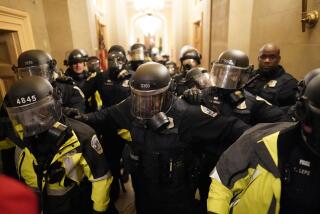Face Isn’t Always the Place for Recognition
- Share via
What’s in a face? When you gaze adoringly at a loved one, or recognize a long-lost school chum in a crowd, what is it that your brain is registering?
Intuition suggests that it’s the shape and set of the eyes, nose and mouth, but according to researchers at the Massachusetts Institute of Technology, you’re actually in a game of the head.
In a whimsical report in the Dec. 5 issue of Nature, graduate student Pawan Sinha and Prof. Tomaso Poggio, of the Department of Brain and Cognitive Sciences, make that point with what appears at first to be a picture of President Clinton next to Vice President Gore.
But a second look reveals that the face in both cases is the same--that of the president.
By digital manipulation of a photograph, the president’s features, with the exact same spatial arrangement, are transposed onto the face of Gore.
“Clearly, in this case, identification rests more on the appearance of the head as a whole than on the internal features alone,” the team writes.
“We therefore present this image in support of the idea that, at least on some occasions, the processing performed by the visual system to judge identity is better characterized as ‘head recognition’ rather than ‘face recognition.’ ”
Manipulations of other images pointed to the same conclusion.
However, Poggio said in a telephone interview, it might not work when the features are very different, such as with different nationalities. “It does depend on the people,” he said.
This insight should be useful in the design of security systems, he said. For instance, the MIT computer system includes a camera. “When you log in, instead of calling for a password, the computer looks at your face,” Poggio said.
And it would know immediately, he said, that “Gore” was really the president.


